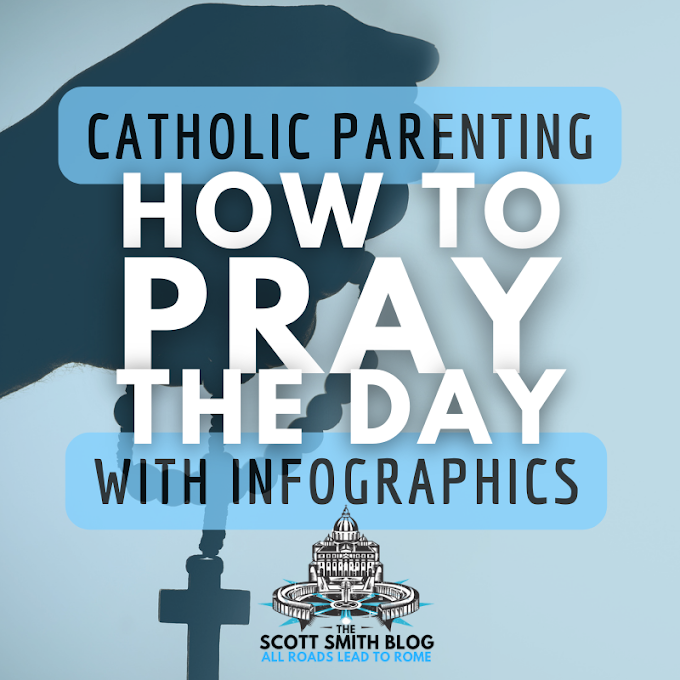"Human life begins at fertilization."
-Every embryology textbook ever
"Life begins at conception" is not, is not, IS NOT! a statement of faith. It is a fact. It is a scientific fact. It is a demonstrable fact. This is not *merely* a religious proposition.
To deny that human life begins at fertilization is to deny science. Plain and simple. But now, with all the references to embryology textbooks below, you don't have to take my word for it.
Cite the science. This is one of the best ways to be persuasively pro-life.
First off, What's the difference between Fertilization and Conception? Does Life begin at Conception or Fertilization?
Conception involves three distinct phases (1) ovulation, (2) fertilization, and (3) implantation. A new, distinctively human life begins at the fertilization phase of conception. Therefore, it is more precise to say that "life begins at fertilization."
WATCH OUT: Pro-abortion advocates are now trying to shift the definition of conception to implantation. Life does NOT begin at implantation. Life is already well underway by the time the blastocyst "implants" into the wall of the mother's uterus.
Why would pro-abortion advocates like Planned Parenthood attempt to shift the starting point of life? This is an attempt to justify the use of abortifacients, such as RU-486 (Mifepristone). Planned Parenthood styles RU-486 and other abortifacients which prevent implantation as "contraceptives." This is an inappropriate use of the term "contraception", as stated in the New England Journal of Medicine. RU-486 is not a contraceptive because conception is well underway by implantation.
Here's a TED Talk with beautiful visualizations of the development of human life from conception to birth:
Again, cite the science ...
This is one of the best ways to be persuasively pro-life."Just a clump of cells?" Here's a great video about how the science of life led supermodel Kathy Ireland to becoming Pro-Life:
Now for all those citations that "life begins at conception" ...
Special thanks to Princeton University and LifeNews for preparing many of these citations.Human Embryology by William J. Larsen, 3rd edition, 2001
“In this text, we begin our description of the developing human with the formation and differentiation of the male and female sex cells or gametes, which will unite at fertilization to initiate the embryonic development of a new individual” (p. 1)“After the oocyte finishes meiosis, the paternal and maternal chromosomes come together, resulting in the formation of a zygote containing a single diploid nucleus. Embryonic development is considered to begin at this point. The newly formed embryo undergoes a series of cells divisions called cleavage as it travels down the oviduct toward the uterus. The cleavage divisions subdivide the zygote first into two cells, then into four, then into eight, and so on.” (p. 1-3)
From the older edition: Human Embryology by William J. Larsen, 2nd edition. New York: Churchill Livingstone, 1997
"The chromosomes of the oocyte and sperm are...respectively enclosed within female and male pronuclei. These pronuclei fuse with each other to produce the single, diploid, 2N nucleus of the fertilized zygote. This moment of zygote formation may be taken as the beginning or zero time point of embryonic development." (p. 17)
Langman’s Medical Embryology by T. W. Sadler, 9th edition, 2004
“Development begins with fertilization, the process by which the male gamete, the sperm, and the female gamete, the oocyte, unite to give rise to a zygote.” (p. 3)“The results of fertilization are (a) restoration of the diploid number of chromosomes, (b) determination of chromosomal sex, and (c) initiation of cleavage.” (p. 48)
From the older edition: Langman's Medical Embryology, T. W. Sadler, 7th edition. Baltimore: Williams & Wilkins 1995
"The development of a human begins with fertilization, a process by which the spermatozoon from the male and the oocyte from the female unite to give rise to a new organism, the zygote." (p. 3)
From the original edition: Medical Embryology by Jan Langman, 3rd edition, Baltimore: Williams and Wilkins, 1975
"The development of a human being begins with fertilization, a process by which two highly specialized cells, the spermatozoon from the male and the oocyte from the female, unite to give rise to a new organism, the zygote." (p. 3)
 |
| Life begins at Conception/Fertilization ... Stages of Conception: (1) Ovulation, (2) Fertilization, (3) Implantation |
Remaking Eden: Cloning and Beyond in a Brave New World, Lee M. Silver, New York: Avon Books, 1997
"[A]nimal biologists use the term embryo to describe the single cell stage, the two-cell stage, and all subsequent stages up until a time when recognizable humanlike limbs and facial features begin to appear between six to eight weeks after fertilization ...""[A] number of specialists working in the field of human reproduction have suggested that we stop using the word embryo to describe the developing entity that exists for the first two weeks after fertilization. In its place, they proposed the term pre-embryo ..."
"I'll let you in on a secret. The term pre-embryo has been embraced wholeheartedly by IVF practitioners for reasons that are political, not scientific. The new term is used to provide the illusion that there is something profoundly different between what we nonmedical biologists still call a six-day-old embryo and what we and everyone else call a sixteen-day-old embryo ..."
"The term pre-embryo is useful in the political arena -- where decisions are made about whether to allow early embryo (now called pre-embryo) experimentation -- as well as in the confines of a doctor's office, where it can be used to allay moral concerns that might be expressed by IVF patients. 'Don't worry,' a doctor might say, 'it's only pre-embryos that we're manipulating or freezing. They won't turn into real human embryos until after we've put them back into your body.'" (p. 39)
Life Before Birth by England, Marjorie A., 2nd ed. England: Mosby-Wolfe, 1996
"Development of the embryo begins at Stage 1 when a sperm fertilizes an oocyte and together they form a zygote." (p. 31)
Biological Principles and Modern Practice of Obstetrics by Greenhill and Friedman: W.B. Saunders, Philadelphia, 1974
"The term conception refers to the union of the male and female pronuclear elements of procreation from which a new living being develops."
Essentials of Human Embryology by Keith L. Moore, Toronto: B.C. Decker Inc, 1988
"Human development begins after the union of male and female gametes or germ cells during a process known as fertilization (conception)." (p. 2)"Fertilization is a sequence of events that begins with the contact of a sperm (spermatozoon) with a secondary oocyte (ovum) and ends with the fusion of their pronuclei (the haploid nuclei of the sperm and ovum) and the mingling of their chromosomes to form a new cell. This fertilized ovum, known as a zygote, is a large diploid cell that is the beginning, or primordium, of a human being." (p. 2)
The Developing Human Being by Keith Moore and T.V.N. Persaud, 7th edition, 2003
From an introductory definition section
"Human development is a continuous process that begins when an oocyte (ovum) from a female is fertilized by a sperm (spermatozoon) from a male. Cell division, cell migration, programmed cell death, differentiation, growth, and cell rearrangement transform the fertilized oocyte, a highly specialized, totipotent cell – a zygote – into a multicellular human being. Although most developmental changes occur during the embryonic and fetal periods, important changes occur during later periods of development: infancy, childhood, adolescence, and early adulthood. Development does not stop at birth. Important changes, in addition to growth, occur after birth (e.g., development of teeth and female breasts). The brain triples in weight between birth and 16 years; most developmental changes are completed by the age of 25. Although it is customary to divide human development into prenatal (before birth) and postnatal (after birth) periods, birth is merely a dramatic event during development resulting in a change in environment.” (p. 2)
"Human development is a continuous process that begins when an oocyte (ovum) from a female is fertilized by a sperm (spermatozoon) from a male. Cell division, cell migration, programmed cell death, differentiation, growth, and cell rearrangement transform the fertilized oocyte, a highly specialized, totipotent cell – a zygote – into a multicellular human being. Although most developmental changes occur during the embryonic and fetal periods, important changes occur during later periods of development: infancy, childhood, adolescence, and early adulthood. Development does not stop at birth. Important changes, in addition to growth, occur after birth (e.g., development of teeth and female breasts). The brain triples in weight between birth and 16 years; most developmental changes are completed by the age of 25. Although it is customary to divide human development into prenatal (before birth) and postnatal (after birth) periods, birth is merely a dramatic event during development resulting in a change in environment.” (p. 2)
“Zygote. This cell results from the union of an oocyte and a sperm during fertilization. A zygote is the beginning of a new human being (i.e., an embryo).” (p. 2)
“Embryo. The developing human during its early stages of development. The embryonic period extends to the end of the eighth week (56 days), by which time the beginnings of all major structures are present.” (p. 3)
From chapter 2: “The Beginning of Human Development: First Week”
First sentence of the Chapter: “Human development begins at fertilization when a male gamete or sperm (spermatozoon) unites with a female gamete or oocyte (ovum) to form a single cell – a zygote. This highly specialized, totipotent cell marked the beginning of each of us as a unique individual.” (p. 16)
“Studies on early stages of development indicate that human oocytes are usually fertilized with 12 hours after ovulation. In vitro observations have shown that the oocyte cannot be fertilized after 24 hours and this it degenerates shortly thereafter.” [This would buttress our argument that sperm and ovum by themselves are parts of the parents and not entire beings. That there is a substantial change between gametes and zygotes.] (p. 31)
“The zygote is genetically unique because half of its chromosomes come from the mother and half from the father. The zygote contains a new combination of chromosomes that is different from that in the cells of either of the parents.” (p. 33)
“Cleavage consists of repeated mitotic divisions of the zygote, resulting in a rapid increase in the number of cells. The embryonic cells – blastomeres – become smaller with each cleavage division. First the zygote divides into two blastomores, which then divide into four blastomores, either blastomeres, and so on.” (p. 36-37) [We can use the cleavage discussion to show that now the embryo is operating on its own and developing.]
Human Embryology by F Beck, Blackwell Scientific Publications, 1985, page vi
This is interesting. Here, an embryology textbook describes how birth is just an event in the development of a baby. It is not the beginning of the baby's life.“It should always be remembered that many organs are still not completely developed by full-term and birth should be regarded only as an incident in the whole developmental process.”
Cloning Human Beings, Report and Recommendations of the National Bioethics Advisory Commission, Rockville, MD: GPO, 1997, Appendix 2
"Embryo: the developing organism from the time of fertilization until significant differentiation has occurred, when the organism becomes known as a fetus."The Harper Collins Illustrated Medical Dictionary by Ida G. Dox, et al., New York: Harper Perennial, 1993
"Embryo: An organism in the earliest stage of development; in a man, from the time of conception to the end of the second month in the uterus." (p. 146)
Test-Tube Babies, Walters, William and Singer, Peter (eds.), Melbourne: Oxford University Press, 1982
"Embryo: The early developing fertilized egg that is growing into another individual of the species. In man the term 'embryo' is usually restricted to the period of development from fertilization until the end of the eighth week of pregnancy." (p. 160)Van Nostrand's Scientific Encyclopedia, 5th edition, New York: Van Nostrand Reinhold Company, 1976
"Embryo: The developing individual between the union of the germ cells and the completion of the organs which characterize its body when it becomes a separate organism.... At the moment the sperm cell of the human male meets the ovum of the female and the union results in a fertilized ovum (zygote), a new life has begun.... The term embryo covers the several stages of early development from conception to the ninth or tenth week of life."[Considine, Douglas (ed.). (p. 943)
Dr. John Eppig, Senior Staff Scientist, Jackson Laboratory (Bar Harbor, Maine) and Member of the NIH Human Embryo Research Panel -- Panel Transcript, February 2, 1994
"I would say that among most scientists, the word 'embryo' includes the time from after fertilization..." (p. 31)Jonathan Van Blerkom of University of Colorado, expert witness on human embryology before the NIH Human Embryo Research Panel -- Panel Transcript, February 2, 1994
"The question came up of what is an embryo, when does an embryo exist, when does it occur. I think, as you know, that in development, life is a continuum.... But I think one of the useful definitions that has come out, especially from Germany, has been the stage at which these two nuclei [from sperm and egg] come together and the membranes between the two break down." (p. 63)Before We Are Born: Essentials of Embryology and Birth Defects, Keith L. Moore and T. V. N. Persaud, 4th edition. Philadelphia: W.B. Saunders Company, 1993
"Zygote. This cell, formed by the union of an ovum and a sperm (Gr. zyg tos, yoked together), represents the beginning of a human being. The common expression 'fertilized ovum' refers to the zygote." (p. 1)Prenatal Care, US Department Of Health And Human Services, Maternal and Child Health Division, 1990
“Your baby starts out as a fertilized egg […] For the first six weeks, the baby is called an embryo.”Human Embryology & Teratology, Ronan O'Rahilly and Fabiola Muller, 2nd edition, New York: Wiley-Liss, 1996
This textbook lists "pre-embryo" among "discarded and replaced terms" in modern embryology, describing it as "ill-defined and inaccurate". (pp. 8, 29)"Although life is a continuous process, fertilization is a critical landmark because, under ordinary circumstances, a new, genetically distinct human organism is thereby formed.... The combination of 23 chromosomes present in each pronucleus results in 46 chromosomes in the zygote. Thus the diploid number is restored and the embryonic genome is formed. The embryo now exists as a genetic unity." (p. 12)
Patten's Foundations of Embryology, Bruce M. Carlson, 6th edition, New York: McGraw-Hill, 1996
"Almost all higher animals start their lives from a single cell, the fertilized ovum (zygote)... The time of fertilization represents the starting point in the life history, or ontogeny, of the individual." (p. 3) |
| Stages of Fertilization |
Okada et al., "A role for the elongator complex in zygotic paternal genome demethylation", Nature 463:554, Jan. 28, 2010
“The life cycle of mammals begins when a sperm enters an egg.”Signorelli et al., "Kinases, phosphatases and proteases during sperm capacitation", Cell & Tissue Research 349(3):765, Mar. 20, 2012
“Fertilization is the process by which male and female haploid gametes (sperm and egg) unite to produce a genetically distinct individual."Coy et al., "Roles of the oviduct in mammalian fertilization", Reproduction 144(6):649, Oct. 1, 2012
“The oviduct or Fallopian tube is the anatomical region where every new life begins in mammalian species. After a long journey, the spermatozoa meet the oocyte in the specific site of the oviduct named ampulla, and fertilization takes place.”EXTRA:
New York Times, June 27, 2000, in an article discussing developments of the Human Genome Project:
"The human genome is a peal, a model of high performance and reliability. Millions of times a year, egg genome meets sperm genome, and the result is a human baby, its parts all in place, its brain a universe of love and meaning."














1 Comments